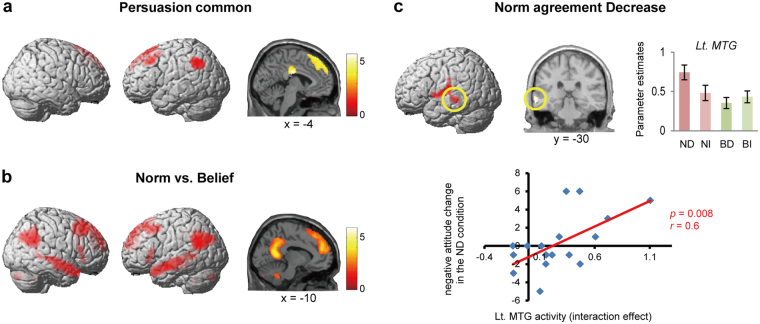Figure 3.
Brain regions activated during the persuasion task. (a) Brain regions commonly activated by all conditions. (b) Brain regions activated by norm-directed persuasion compared with those activated by belief-directed persuasion (direction non-specific in both cases). (c) Left middle temporal gyrus was specifically recruited in persuasion that designed to decrease agreement with norms. The activity found by the contrast (ND − NI) − (BD − BI) (upper panel) positively correlated with the degree of persuasion-induced attitude change across participants (lower right). Activation maps in (a–c) have statistical thresholds of p < 0.001, corrected to p < 0.05 for multiple comparisons using cluster size, assuming the whole brain as the search volume. Error bars depict SEM. ND, norm-agreement decrease. NI, norm-agreement increase. BD, belief-agreement decrease. BI, belief-agreement increase.

